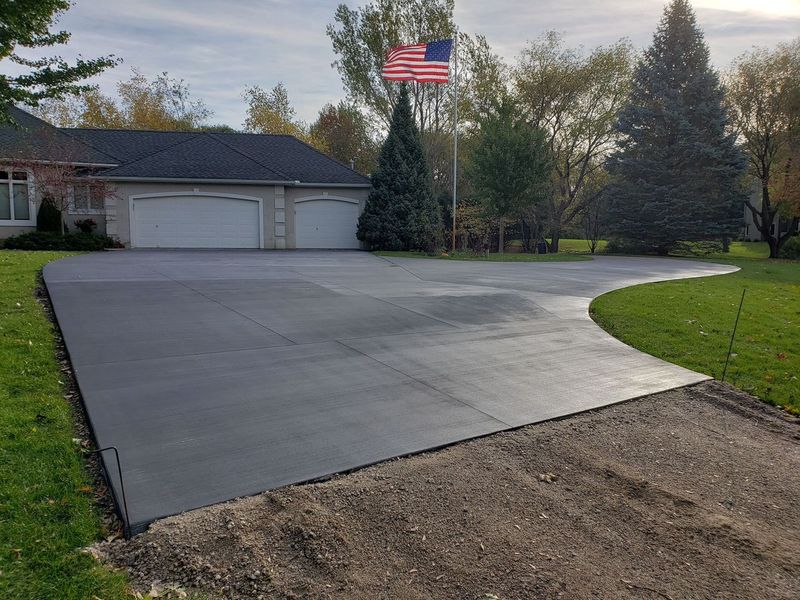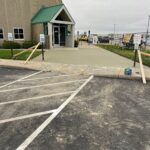In public construction, few components take more daily abuse than driveways and paved access points. From snowplows and delivery trucks to school buses and emergency vehicles—your pavement needs to hold up under heavy loads, constant use, and extreme Midwest weather.
If you’re planning repairs, new construction, or replacements, concrete is the gold standard for durability and compliance. And with budget season always around the corner, now’s the time to plan smarter.
1. Why Concrete Over Asphalt for Public Facilities?
While asphalt may offer faster installation, concrete outperforms it in:
- Longevity: Concrete driveways last 30–40 years with proper care—almost double the lifespan of asphalt.
- Maintenance: Less cracking, potholing, and fewer resurfacing needs.
- ADA Compliance: Smoother transitions and easier grading for ramps and sidewalks.
- Heat Resistance: Concrete reflects heat, reducing urban heat island effect and lowering maintenance in the summer.
For high-traffic areas like city buildings, schools, fire stations, and libraries, concrete delivers lasting value.
2. Where We Install Concrete Pavement & Driveways
At Stonewing Builders, we handle a wide range of public-facing installations:
- Government facility driveways
- School drop-off zones & bus loops
- Library or community center access roads
- Public safety buildings (fire, EMS, and police)
- Accessible parking pads & sidewalks
Each installation is designed for heavy-duty vehicle traffic, weather resistance, and visual appeal.
3. Our Process: More Than Just Pouring Concrete
Public sector clients need reliability, safety, and documentation. Here’s how we ensure it:
a. Site Grading & Base Prep
We remove existing materials and stabilize the soil. Then we install and compact a gravel base to ensure long-term stability.
b. Reinforcement
We use steel rebar or wire mesh depending on load requirements—critical for areas supporting plows, buses, or utility trucks.
c. Pouring & Finishing
We use air-entrained concrete mixes for freeze/thaw protection and apply broom or trowel finishes for traction and durability.
d. Curing & Sealing
After pouring, the concrete is properly cured and sealed to prevent early cracking and ensure surface longevity.
4. ADA & Code-Compliant Pavement Design
A driveway project often includes parking spots, ramps, or sidewalk transitions. We make sure:
- All slopes meet ADA regulations
- Sidewalk crossings are flush and marked
- Handrails and landings (if needed) are accounted for in the grade
No detail is too small when it comes to public safety and code compliance.
5. Case Study: New Concrete Entry for City Hall
We recently completed a full driveway replacement for a city hall where asphalt was failing due to utility vehicle traffic. Our team:
- Excavated the damaged surface
- Installed a reinforced concrete driveway with stormwater-friendly grading
- Added textured sidewalk crosswalks for safer pedestrian access
The result? A smoother, safer, and lower-maintenance entrance that improved both curb appeal and functionality.








